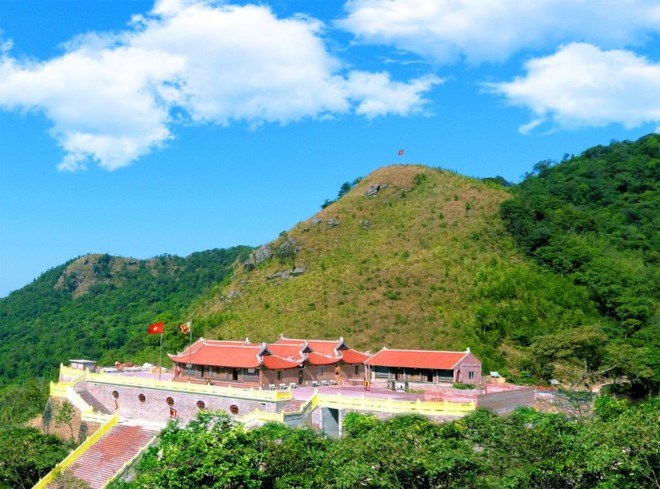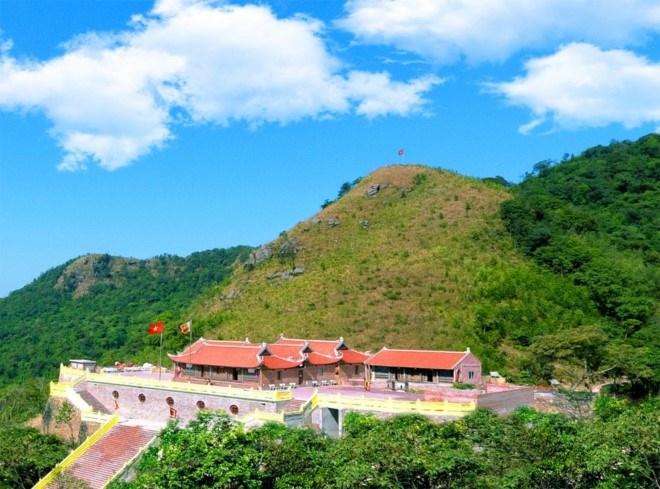



Time to dig: Archeological excavations will be conducted at Ngọa
Vân Pagoda - the national historical complex, in northern coastal Quảng Ninh
province. (Photo captreongoavan.com)
The plan, approved by the Ministry of Culture, Sports and Tourism
(MoCST), will be implemented in six months from August 25, 2018 to February 25,
2019 on an area of 900sq.m a report from the ministry said yesterday.
University of Social Sciences and Humanities and Hanoi National University in
collaboration with Quang Ninh province’s Museum are assigned to manage the
excavation, which will be implemented on three archaeological sites of Cua Phu,
Do Kieu and Thong Dan, all of which are part of the Ngoa Van Pagoda complex,
according to the MoCST.
Ngoa Van Pagoda - one of 14 historical relic sites of the Tran Dynasty
(1225-1400) - was approved by the Government as a special National Heritage in
2014.
The pagoda is the place where Buddha-Emperor Tran Nhan Tong (1258-1308) founded
Truc Lam Zen Monastery and attained Nirvana.
During the excavation, the MoCST has ordered local authorities to pay attention
to protect the strata of the relic, saying that they should be responsible for
disseminating information to local people to improve their awareness on the
need to protect such a valuable historical and cultural heritage.
The ministry also asked excavation units not to announce their work results
until they got approval and agreement from the chief management unit and the
Cultural Heritage Department (CHD).
For the archaeological artifacts collected during the excavation, the
provincial Museum and Department of Culture and Information should be
responsible for storing, preserving and reporting to the minister of the MoCST.
A plan to preserve and promote the value of such artifacts should also be set
up and reported to the ministry, according to the decision.
The MoCST ordered management units to make preliminary reports right after the
excavation programme concludes, saying it should not be later than three months
after the excavation.
To follow that, a scientific report should be set up and reported to the CHD no
later than one year after the excavation, according to the MoCST decision.
Before issuing the results of the excavation, the excavation management units
should discuss with the CHD, which will monitor and inspect the excavation work
in accordance with the content of the ministerial decision.
Located on Bao Dai Mountain, Binh Khe commune in Dong Trieu town, Ngoa Van
Pagoda has been developed to be one of 14 tourism destinations in Quang Ninh
province to meet the demand for spiritual tourism of Buddhist monks and
pilgrims across the country.
In the past, to create a chance for pilgrims and visitors to show respect and
gratitude to the contributions of Buddhist King-Monk Tran Nhan Tong, and to
pray for a happy and peaceful year and to attract more tourists to the
district, the locality has strived to turn the place into an ideal destination
for tourists.
A traditional path to the pagoda was paved and a cable car system was built to
enable visitors to contemplate the peaceful atmosphere and the breathtaking
beauty of the place.
The pagoda relic complex includes four areas, namely Thong Dan, Ngoa Van, Da Chong
and Ba Bac, with 15 groups of different temples and towers. Ngoa Van Pagoda is
the central part of the complex. In the past, people had to walk along a
slippery path to the Pagoda by starting from An Sinh Temple, going along Phu Am
Tra stream to Do Kieu slope and crossing Thong Da.
Since 2016, the province also held the annual Ngoa Van Spring Festival in Ngoa
Van Pagoda, from January 9th till the end of March in the lunar calendar.
Source: VNA